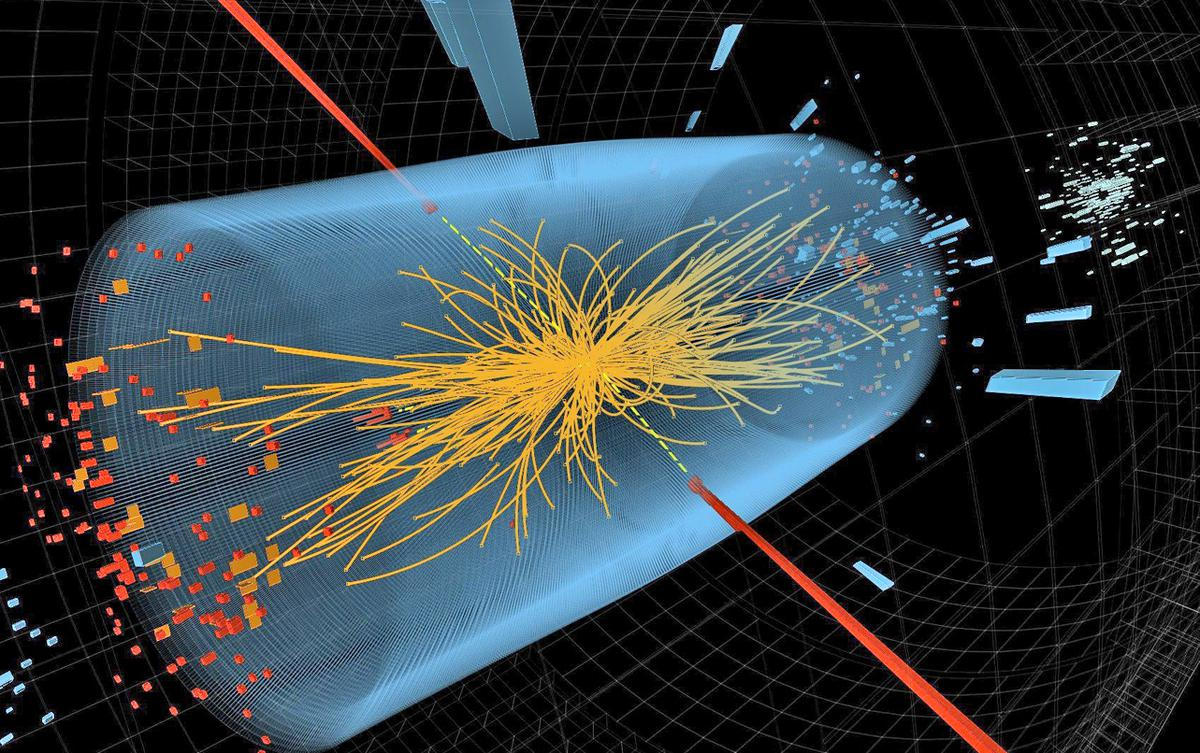Science & Technology
Large Hadron Collider
- 14 Apr 2023
- 7 min read
For Prelims: Large Hadron Collider, CERN, Quarks and gluons, Protons, Big Bang, Supersymmetry and Extra Dimensions.
For Mains: Large Hadron Collider.
Why in News?
The LHC (Large Hadron Collider) has recently undergone upgrades to make it more accurate and sensitive and will start collecting data in May 2023.
- The LHC has undergone upgrades to increase its sensitivity and accuracy, allowing scientists to study particles with even higher energy.
What is Hadron?
- Hadron is any member of a class of subatomic particles that are built from quarks and thus react through the agency of the strong force. The hadrons embrace mesons, baryons (e.g., protons, neutrons, and sigma particles), and their many resonances.
What is LHC?
- About:
- The LHC is a huge experiment that collides two beams of particles to study physics at very high energies. It's the largest science experiment in the world and is operated by CERN (European Organisation for Nuclear Research)
- The LHC is a circular pipe that is 27 km long and is located on the Franco-Swiss border near Geneva, Switzerland.
- It consists of two D-shaped magnetic fields created by almost 9,600 magnets.
- Working Mechanism:
- Protons, which are subatomic particles made up of quarks and gluons, are accelerated inside the LHC using these magnets.
- Quarks and gluons are subatomic particles that make up protons and neutrons. Quarks come in six different "flavors": up, down, charm, strange, top, and bottom. Gluons are particles that "glue" quarks together inside protons and neutrons through the strong nuclear force.
- Protons are not the only particles accelerated in the LHC.
- By switching the direction of the magnetic field rapidly, protons can be accelerated through the beam pipe.
- Other components help to focus the particles and keep them from hitting the pipe's walls.
- The protons eventually move at 99.999999% of the speed of light.

- Protons, which are subatomic particles made up of quarks and gluons, are accelerated inside the LHC using these magnets.
- Significance:
- At such high energies, the LHC can create conditions that existed only fractions of a second after the Big Bang.
- Scientists use detectors placed along the beam pipe to observe the interactions of the accelerated particles, which can reveal new insights into the nature of matter and the universe.
- The LHC has already discovered the Higgs boson in 2012 and confirmed their findings in 2013, which is a particle that gives other particles mass.
- The LHC also helps to test theories in particle physics, such as supersymmetry and extra dimensions.
What are Supersymmetry and Extra Dimensions?
- Supersymmetry:
- It proposes that every known particle in the universe has a yet-to-be-discovered "superpartner" particle, which would have opposite spin and different quantum numbers.
- This would mean that every particle in the universe would have a partner that has not yet been observed, and it could help to solve some of the problems with the current standard model of particle physics, such as the hierarchy problem.
- Extra Dimensions:
- Extra dimensions propose that the universe has more than the three dimensions of space and one dimension of time that we are familiar with.
- The idea is that there may be additional dimensions that are "curled up" or compactified and are too small to be detected by our current experiments.
- The concept of extra dimensions arises in certain theories of gravity, such as string theory, which suggest that gravity is stronger than expected at small distances because it "feels" extra dimensions.
What are the Related Challenges?
- The LHC faces many technical challenges, such as maintaining the stability of the magnets and avoiding collisions between particles and the pipe's walls.
- The LHC generates enormous amounts of data. Handling and processing this data is a challenge that requires advanced computing and storage systems.
- The LHC is an international collaboration that involves thousands of scientists from different countries and institutions. Coordinating this collaboration and ensuring that all participants have access to the data and facilities they need is a challenge.
Way Forward
- The LHC is a remarkable scientific achievement, but operating it requires a coordinated effort from many people and institutions. Addressing the challenges associated with the LHC is crucial to advancing our understanding of the universe.
- The LHC has tested and disproved some theories that aim to explain the limitations of the Standard Model, causing uncertainty in the physics community. To move forward, two ideas have emerged: upgrading the LHC to increase its luminosity and building a bigger and more expensive version in the hopes of finding new physics.
- While CERN and China have proposed such a machine, some physicists question whether the money would be better spent on less-expensive experiments with guaranteed results.
UPSC Civil Services Examination, Previous Year Question (PYQ)
Q. The efforts to detect the existence of Higgs boson particle have become frequent news in the recent past. What is/are the importance of discovering this particle?
- It will enable us to understand as to why elementary particles have mass.
- It will enable us in the near future to develop the technology of transferring matter from one point to another without traversing the physical space between them.
- It will enable us to create better fuels for nuclear fission.
Select the correct answer using the codes given below:
(a) 1 only
(b) 2 and 3 only
(c) 1 and 3 only
(d) 1, 2 and 3
Ans: (a)





-min.jpg)